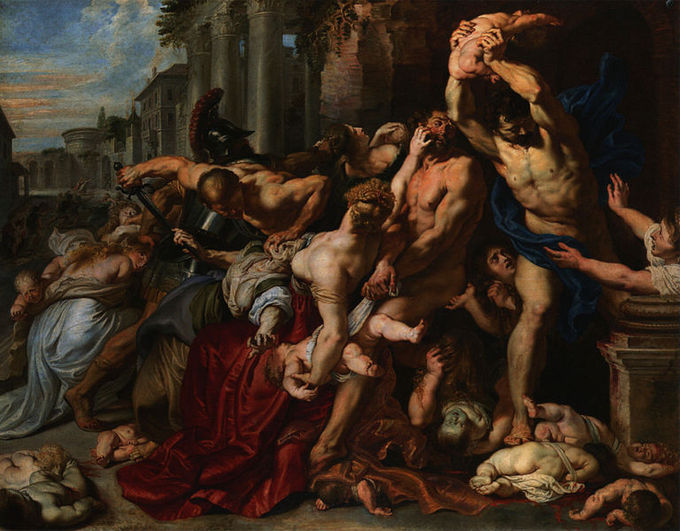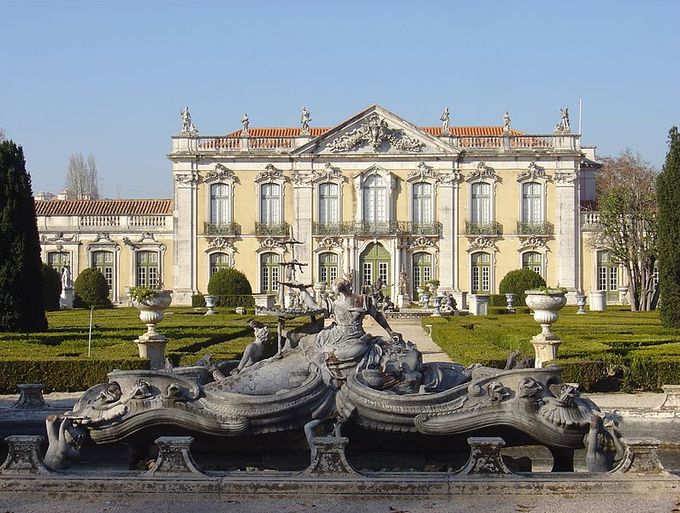21.1: The Baroque Period
( \newcommand{\kernel}{\mathrm{null}\,}\)
Defining the Baroque Period
Baroque is a period of artistic style that started around 1600 in Rome, Italy, and spread throughout the majority of Europe.
Name the most prominent characteristics of Baroque art and its best known artists
Key Points
- The most important factors during the Baroque era were the Reformation and the Counter-Reformation ; the development of the Baroque style was considered to be closely linked with the Catholic Church. The popularity of the Baroque style was encouraged by the Catholic Church, which had decided at the Council of Trent that the arts should communicate religious themes and direct emotional involvement in response to the Protestant Reformation .
- The Baroque style is characterized by exaggerated motion and clear detail used to produce drama, exuberance, and grandeur in sculpture , painting, architecture, literature, dance, and music.
- The chiaroscuro technique refers to the interplay between light and dark that was often used in Baroque paintings of dimly lit scenes to produce a very high-contrast, dramatic atmosphere.
- Famous painters of the Baroque era include Rubens, Caravaggio, and Rembrandt. In music, the Baroque style makes up a large part of the classical canon, such as Bach, Handel, and Vivaldi.
- The later Baroque style was termed Rococo, a style characterized by increasingly decorative and elaborate works.
Key Terms
- Counter-Reformation: The period of Catholic revival beginning with the Council of Trent (1545–1563) and ending at the close of the Thirty Years’ War (1648); sometimes considered a response to the Protestant Reformation.
- Reformation: The religious movement initiated by Martin Luther in the 16th century to reform the Roman Catholic Church.
- Council of Trent: One of the Roman Catholic Church’s most important ecumenical meetings, held between 1545 and 1563 in northern Italy; it was prompted by the Protestant Reformation and has been described as the embodiment of the Counter-Reformation.
- chiaroscuro: An artistic technique popularized during the Renaissance, referring to the use of exaggerated light contrasts in order to create the illusion of volume.
Overview: The Baroque Period
The Baroque is a period of artistic style that started around 1600 in Rome , Italy, and spread throughout the majority of Europe during the 17th and 18th centuries. In informal usage, the word baroque describes something that is elaborate and highly detailed.
The most important factors during the Baroque era were the Reformation and the Counter-Reformation, with the development of the Baroque style considered to be linked closely with the Catholic Church. The popularity of the style was in fact encouraged by the Catholic Church, which had decided at the Council of Trent that the arts should communicate religious themes and direct emotional involvement in response to the Protestant Reformation. Baroque art manifested itself differently in various European countries owing to their unique political and cultural climates.
Characteristics
The Baroque style is characterized by exaggerated motion and clear detail used to produce drama, exuberance, and grandeur in sculpture, painting, architecture, literature, dance, and music. Baroque iconography was direct, obvious, and dramatic, intending to appeal above all to the senses and the emotions.
The use of the chiaroscuro technique is a well known trait of Baroque art. This technique refers to the interplay between light and dark and is often used in paintings of dimly lit scenes to produce a very high-contrast, dramatic atmosphere. The chiaroscuro technique is visible in the painting The Massacre of the Innocents by Peter Paul Rubens. Other important Baroque painters include Caravaggio (who is thought to be a precursor to the movement and is known for work characterized by close-up action and strong diagonals) and Rembrandt.

In the Baroque style of architecture, emphasis was placed on bold spaces , domes , and large masses , as exemplified by the Queluz National Palace in Portugal. In music, the Baroque style makes up a large part of the classical canon. Important composers include Johann Sebastian Bach, George Handel, and Antonio Vivaldi. In the later part of the period, the Baroque style was termed Rococo, a style characterized by increasingly decorative and elaborate works.

- Curation and Revision. Provided by: Boundless.com. License: CC BY-SA: Attribution-ShareAlike
- Peter Paul Rubens Massacre of the Innocents. Provided by: Wikipedia. Located at: en.Wikipedia.org/wiki/File:Peter_Paul_Rubens_Massacre_of_the_Innocents.jpg. License: Public Domain: No Known Copyright
- Queluz Palace fountains. Provided by: Wikipedia. Located at: en.Wikipedia.org/wiki/File:Queluz_Palace_fountains.JPG. License: Public Domain: No Known Copyright
- Counter-Reformation. Provided by: Wiktionary. Located at: en.wiktionary.org/wiki/Counter-Reformation. License: CC BY-SA: Attribution-ShareAlike
- Baroque architecture. Provided by: Wikipedia. Located at: en.Wikipedia.org/wiki/Baroque_architecture. License: CC BY-SA: Attribution-ShareAlike
- Baroque. Provided by: Wikipedia. Located at: en.Wikipedia.org/wiki/Baroque. License: CC BY-SA: Attribution-ShareAlike
- Chiaroscuro. Provided by: Wikipedia. Located at: en.Wikipedia.org/wiki/Chiaroscuro. License: CC BY-SA: Attribution-ShareAlike
- Council of Trent. Provided by: Wikipedia. Located at: en.Wikipedia.org/wiki/Council_of_Trent. License: CC BY-SA: Attribution-ShareAlike
- Caravaggio. Provided by: Wikipedia. Located at: en.Wikipedia.org/wiki/Caravaggio. License: CC BY-SA: Attribution-ShareAlike
- Reformation. Provided by: Wiktionary. Located at: en.wiktionary.org/wiki/Reformation. License: CC BY-SA: Attribution-ShareAlike
- chiaroscuro. Provided by: Wiktionary. Located at: en.wiktionary.org/wiki/chiaroscuro. License: CC BY-SA: Attribution-ShareAlike


